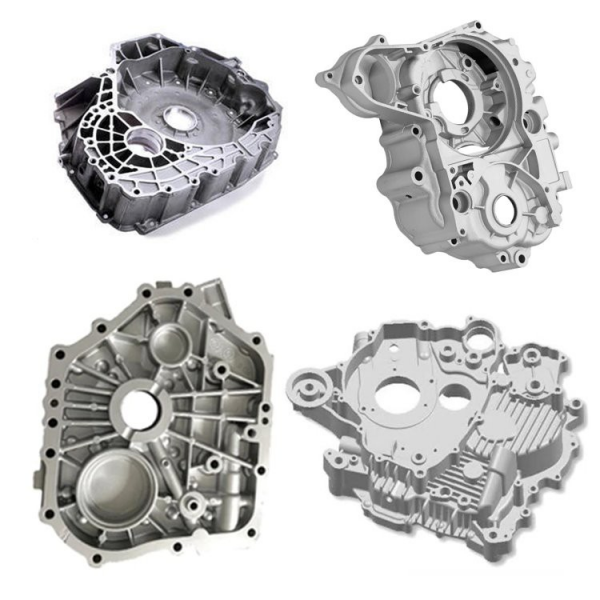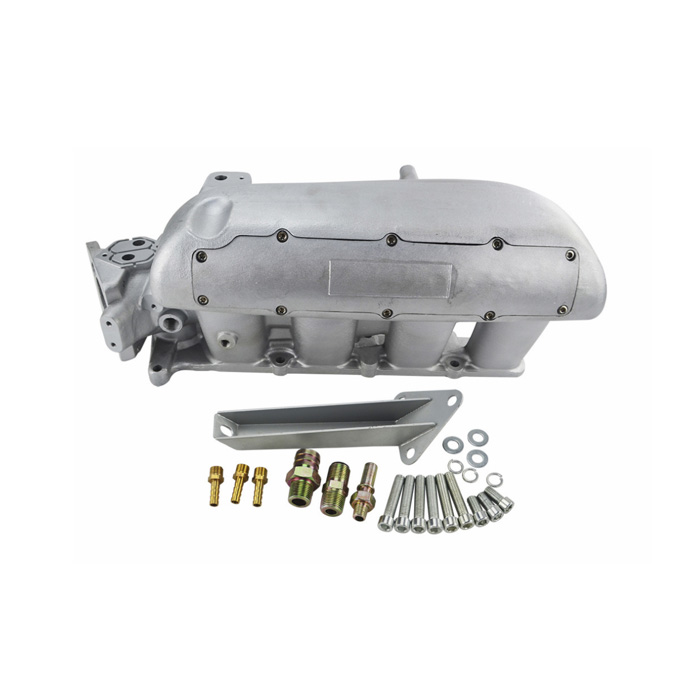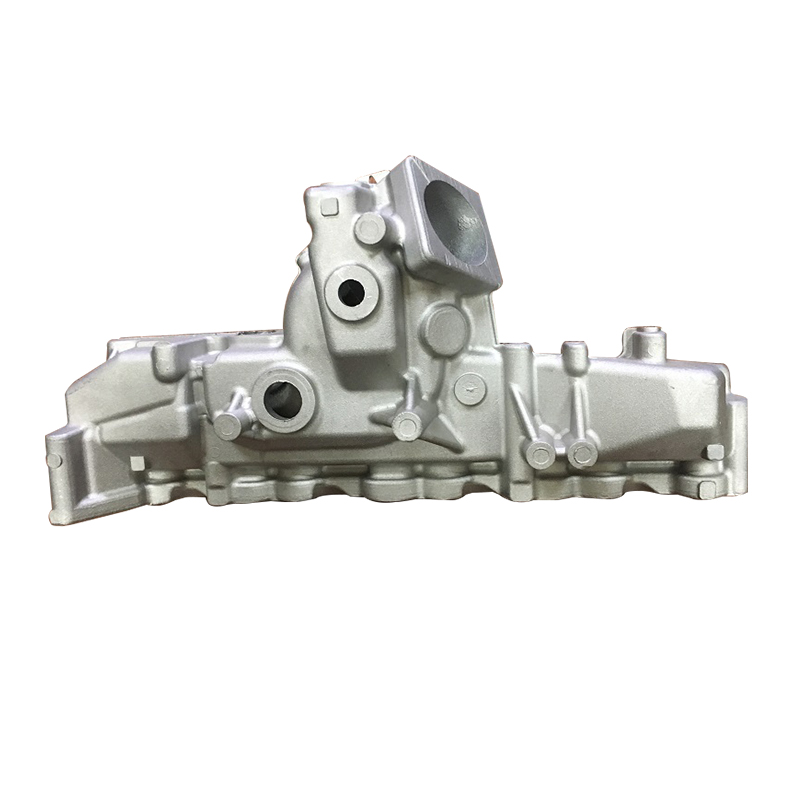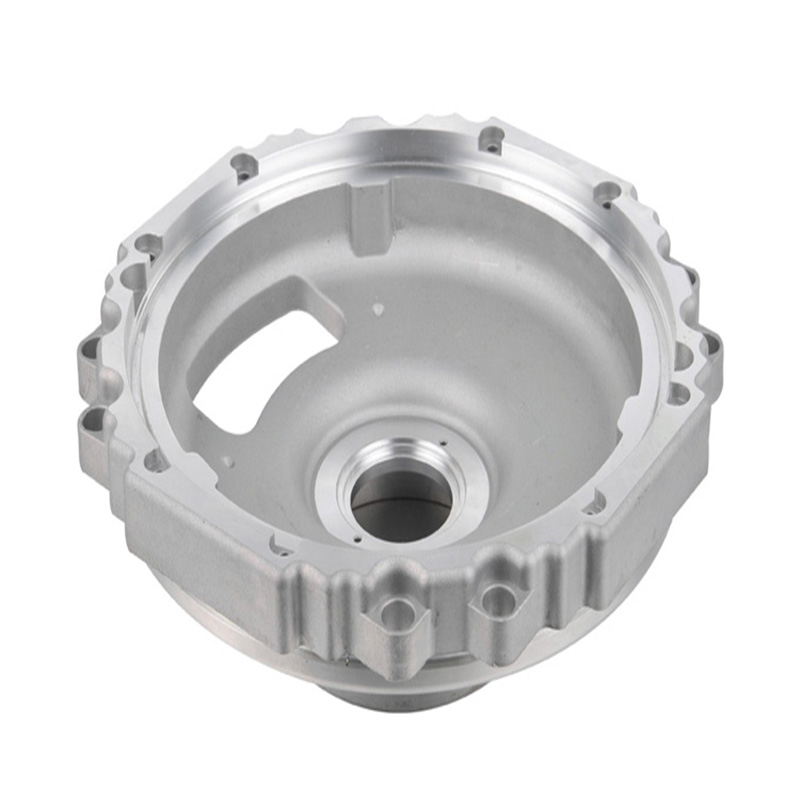Why Choose Aluminium Die Casting for Manufacturing Automotive Parts?
The automotive industry has witnessed a significant shift towards lightweight yet durable materials, and aluminum die casting has become a preferred choice for producing automotive parts. With the demand for fuel-efficient, eco-friendly, and safe vehicles, automobile manufacturers are under constant pressure to innovate and improve their products. While several materials can be used for manufacturing automotive parts, aluminum die casting stands out for its versatility, affordability, and reliability. In this article, we will explore the reasons why aluminum die casting is an excellent option for producing automotive parts and how it improves the overall performance of vehicles.
1. Lightweight and Durable: The Advantages of Aluminium Die Casting for Automotive Parts
Lightweight: One of the biggest advantages of aluminium die casting for automotive parts is its lightweight nature. Due to its low density, aluminum is one of the lighter metals available for casting. This makes it an ideal choice for producing parts for cars and other vehicles, as it helps to reduce the overall weight of the vehicle. This, in turn, can lead to improved fuel efficiency, better handling and maneuverability, and a smoother and more comfortable ride for the driver and passengers alike.
Durable: Another major advantage of aluminium die casting for automotive parts is its durability. Aluminium is a highly durable material that can withstand tough conditions and extreme temperatures, making it an ideal choice for parts that need to be strong and long-lasting. Moreover, aluminium is resistant to corrosion, which means that it can withstand exposure to moisture and other environmental factors without rusting or deteriorating over time. This makes it an ideal choice for parts that are exposed to the elements, such as exterior components, engine parts, and more.
2. The Future of Automotive Manufacturing Lies in Aluminium Die Casting
As the automobile industry evolves, manufacturers are seeking new and innovative ways to reduce weight, increase efficiency, and improve overall performance. One such method that has gained popularity in recent years is aluminium die casting. This technique involves melting aluminium alloys and injecting them into a die cast mold to create complex shapes and parts with high precision.
Aluminium die casting offers several advantages for automotive manufacturers. Firstly, it is a lightweight material that can reduce the weight of vehicles and improve fuel efficiency. Secondly, it is highly durable and corrosion-resistant, making it ideal for use in harsh environments. Additionally, the use of aluminium die casting can significantly reduce production costs while improving the quality of components, resulting in a more cost-effective and efficient manufacturing process. With these benefits in mind, it’s no surprise that automotive manufacturers are increasingly turning to aluminium die casting as the future of their manufacturing processes.
- Lightweight: Aluminium die casting is an ideal material for reducing vehicle weight and improving fuel efficiency.
- Durable: The use of aluminium alloys in die casting makes components highly durable and resistant to corrosion.
- Cost-effective: Implementing aluminium die casting can significantly reduce production costs and improve efficiency.
As new technologies emerge and the automotive industry continues to evolve, it’s clear that aluminium die casting will play a significant role in the future of manufacturing. As manufacturers seek to stay ahead of the curve and meet consumer demands for better performance and efficiency, investing in new production techniques like aluminium die casting will be increasingly essential.
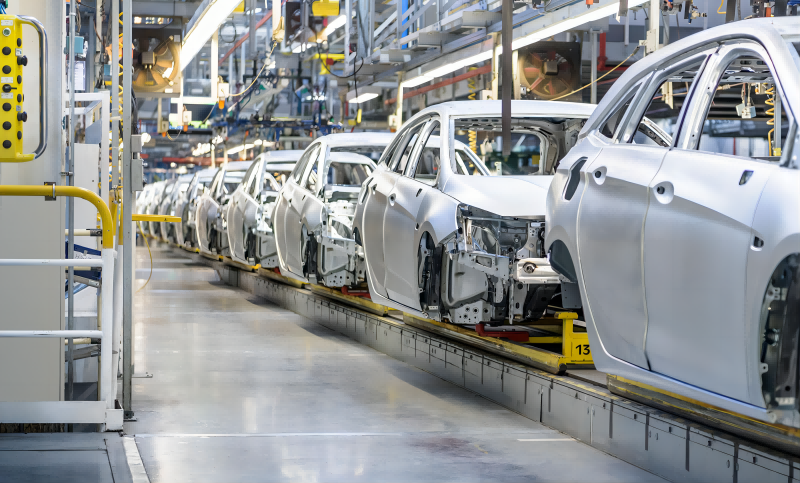
3. The Cost-Effective Solution: Choosing Aluminium Die Casting for Automotive Components
Cost-Effective Solution:
Aluminium die casting is the most cost-effective solution for automotive components. It is the most preferred method among automotive manufacturers as it offers various benefits such as reducing the weight of the components, providing faster production times, and improving fuel efficiency. With the increasing demand for fuel-efficient vehicles, aluminium die casting has become an essential component of the automotive industry.
- Weight Reduction: Aluminium castings are about one-third the weight of steel castings, which leads to better fuel efficiency, lowers the cost of the vehicle, and improves its performance.
- Production Time: Due to its ability to produce complex shapes, the production time of aluminium die casting is significantly reduced, which makes it a cost-effective option for manufacturers.
- Corrosion Resistance: Aluminium die casting is resistant to corrosion, thus enhancing the lifespan of the components and reducing maintenance costs.
- Design Flexibility: The ability to produce intricate designs with precision, coupled with the superior mechanical properties of aluminium, make it an excellent material for automotive components.
Overall, the benefits of aluminium die casting makes it a cost-effective solution for producing automotive components. With its flexibility, lightweight nature, and ability to produce complex shapes with precision, it’s no surprise that the use of aluminium die casting in the automotive industry is only set to rise going forward.
4. Achieving Precision and Consistency with Aluminium Die Casting
Achieving precision and consistency with aluminium die casting is an essential aspect of producing high-quality parts for various industries. This process involves creating intricate shapes and sizes by pouring molten metal into a mould and then allowing it to cool and harden. By using a die casting machine, the process of creating complex shapes is achieved with high efficiency while maintaining high accuracy and speed.
Some of the factors that contribute to achieving precision and consistency in aluminium die casting include:
- Quality Mould Design: The mould design must be accurate and precise, allowing for the creation of complex shapes and features without any defects.
- Controlled Process Parameters: Strict control of the casting parameters such as temperature, pressure, and time can help achieve consistent results in quality and accuracy.
- High-Quality Machines: The use of high-quality machinery ensures high precision and accuracy in the casting process while reducing the likelihood of errors and defects.
- Skilled Workforce: Highly skilled operators and technicians with adequate training and experience are essential for delivering consistent and accurate results.
With these factors in place, manufacturers and engineers can achieve precision and consistency in aluminium die casting. This not only ensures the production of high-quality parts but also reduces production costs by eliminating the need for post-casting processes such as machining, polishing, or finishing.
5. The Sustainable Choice: Aluminium Die Casting and its Environmental Benefits
When it comes to choosing materials for manufacturing, the environmental impact of a material is a crucial aspect to consider. Aluminium die casting is one such option that offers various environmental benefits. Here are some of them:
- Recyclability: Aluminium is a highly recyclable material, meaning that it can be melted down and reused without losing its properties. This is not only cost-effective, but it also reduces the amount of waste that ends up in landfills. In fact, aluminium is one of the most recycled materials on the planet, with up to 75% of all aluminium ever produced still in use today.
- Energy efficiency: The production of aluminium requires a lot of energy, but the material’s high strength-to-weight ratio means that products made from it require less material overall. This translates into lighter parts that require less energy to produce and transport, ultimately reducing greenhouse gas emissions.
- Longevity: Aluminium is highly resistant to corrosion and other forms of wear and tear, making it an ideal material for products that need to withstand harsh environments. This longevity means that products made from aluminium die casting can last for decades, reducing the need for replacement parts and ultimately lessening the environmental impact.
The environmental benefits of aluminium die casting makes it a sustainable choice for manufacturers who want to reduce their environmental impact while still producing high-quality products. By choosing aluminium, companies can contribute to a more circular economy and reduce their carbon footprint, all while producing durable and efficient products. It’s a win-win situation for both businesses and the environment.
6. From Engine Components to Grilles: The Versatility of Aluminium Die Casting in the Automotive Industry
Aluminium Die Casting has been an important part of the automobile industry for many years. This process uses molten aluminium to create complex engine components, transmission cases, brackets, and other parts that are vital for the smooth operation of modern vehicles. The versatility of aluminium die casting has made it a valuable tool for manufacturers of all sizes, from small startups to large multinational corporations.
In addition to engine components, aluminium die casting is also used to create grilles, badges, and other decorative elements that add visual interest to vehicles. These parts are often made using intricate moulds that allow for precise details and fine textures. With the ability to produce both functional and decorative parts, it’s no wonder that aluminium die casting has become such an essential process in the modern automotive industry.
7. Overcoming Design Challenges with Aluminium Die Casting
Aluminium die casting is a popular manufacturing method used by various industries. However, like any other manufacturing process, there are some design challenges associated with this technique. In this post, we will look at some common design challenges faced by manufacturers and how they can be overcome.
Design Challenges:
- Parting Lines: Parting lines are the areas where the two halves of the die meet. They can leave marks on the surface of the part or create flash, which can be problematic. To overcome this, designers can use draft angles or incorporate additional features to the design that will help the parting lines blend in better.
- Thin Walls: Thin walls can pose a challenge during the aluminium die casting process as they can quickly cool and cause defects in the final product. By incorporating a rib design or increasing the thickness of the walls, the designer can reduce the likelihood of defects.
- Undercuts: Undercuts are recessed features in the part that cannot be directly ejected from the mold. To overcome this, designers can incorporate a slider or lifter feature into the mold that will allow for easy release of the part without damaging it.
By carefully considering these design challenges and implementing appropriate solutions, manufacturers can produce high-quality aluminium die cast parts that meet their customers’ specifications. The process will be streamlined, and costs will be reduced, leading to increased efficiency and profitability.
8. Boosting Performance: Aluminium Die Casting and its Role in Enhancing Vehicle Efficiency
Aluminium Die Casting and its Role in Enhancing Vehicle Efficiency
Aluminium Die Casting is a manufacturing process used extensively in the automotive industry, where it has gained significant popularity over the years. This process involves injecting molten aluminum into a die/mould to create complex shapes and structures that are both lightweight and durable. The resulting aluminum parts are widely used in the production of engines, transmissions, chassis, and other critical automotive components. In recent years, aluminium die casting has gained more prominence as automakers look to produce fuel-efficient vehicles that meet stringent emission standards. Here are some of the ways in which aluminium die casting can help enhance vehicle efficiency:
- Weight Reduction: Aluminum is a lightweight material that can significantly reduce the weight of automotive components. Lightweight components result in lower overall vehicle weight, which translates to improved fuel economy.
- Improved Thermal Management: Aluminum has excellent heat dissipation properties, making it ideal for use in thermal management systems. By incorporating aluminium die-cast components, automakers can achieve better temperature control and reduce energy wastage.
- Better Structural Integrity: Aluminium die cast components are highly durable and resistant to fatigue, making them ideal for use in critical automotive structures. Robust structures result in safer vehicles that are less prone to accidents, while also reducing component wear and tear.
Overall, aluminium die casting plays a crucial role in enhancing vehicle efficiency, which is why it is widely used in the automotive industry today. With the continued push for greener technologies and sustainable practices, it is likely that the use of aluminium die casting will only increase in the coming years as automakers look to reduce their carbon footprint and produce more fuel-efficient vehicles.
9. Aluminium Die Casting vs. Plastic Injection Molding: A Comparison
When it comes to manufacturing, two commonly used methods are Aluminum Die Casting and Plastic Injection Molding. Both are used extensively in the production of various items and can offer numerous benefits. Let’s take a closer look at these two methods and see how they compare.
- Surface finish: The surface finish of products produced through die casting is typically better than injection molding. Die casting molds are made of high-quality tool steel, allowing for sharper details and smoother surfaces. The surface finish of injection molded parts, on the other hand, can be improved by using an appropriate polishing process.
- Cost-effectiveness: Aluminum die casting is generally more expensive than plastic injection molding. However, die casting produces parts with a longer life span, which can save money in the long run by reducing the need for replacement parts. Injection molding is often preferred for producing high-volume parts where cost per unit is low.
- Mechanical properties: Die casting produces parts that are stronger than those produced by injection molding. Aluminum alloy has desirable mechanical properties, making it ideal for parts that require high strength and durability. However, injection molding can produce a wider range of plastics with varying mechanical properties, making it more versatile in terms of materials.
Both Aluminium Die Casting and Plastic Injection Molding have their unique advantages and disadvantages. The choice of which method to use depends on the desired outcome and intended use of the product. In conclusion, Aluminum Die Casting is ideal for producing strong parts with excellent surface finish while Plastic Injection Molding is a more cost-effective option for high-volume production of parts with varying mechanical properties.
10. Staying Ahead of the Curve: Embracing Aluminium Die Casting for Automotive Parts Production
As the automotive industry continues to evolve, one of the key areas of focus is the production of lightweight, high-performance parts. Aluminium die casting has emerged as a leading solution for this challenge, offering a range of benefits for manufacturers and consumers alike.
- Lightweight: Aluminium is one of the lightest metals, making it ideal for parts that require strength and durability without adding unnecessary weight to vehicles.
- Cost-effective: Die casting is a highly efficient process, allowing for large-scale production of high-quality parts at a lower cost than other methods.
Other advantages of aluminium die casting include its ability to produce complex shapes and intricate designs with high precision and consistency, as well as its resistance to corrosion and other environmental factors that can degrade vehicle components over time. By embracing this innovative manufacturing technique, automakers can stay ahead of the curve and deliver the best possible products to their customers.
In conclusion, aluminium die casting for automotive parts is an ideal solution for a variety of reasons. The versatility, durability, and corrosion-resistant qualities of aluminium make it a top choice for manufacturers looking to create high-quality parts that perform exceptionally well in demanding environments. With its lightweight and cost-effective properties, aluminium die casting enables the production of complex parts with tight tolerances and consistency. As the automotive industry continues to evolve and innovate, aluminum die casting will undoubtedly play an essential role in shaping the future of automotive engineering. Whether you’re a manufacturer or a consumer, you can count on the superior quality of automotive parts produced through aluminum die casting.
NINGBO FUERD MECHANICAL CO., LTD
Website: https://www.fuerd.com
